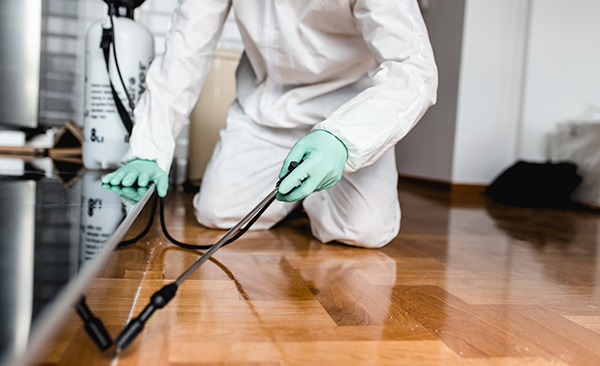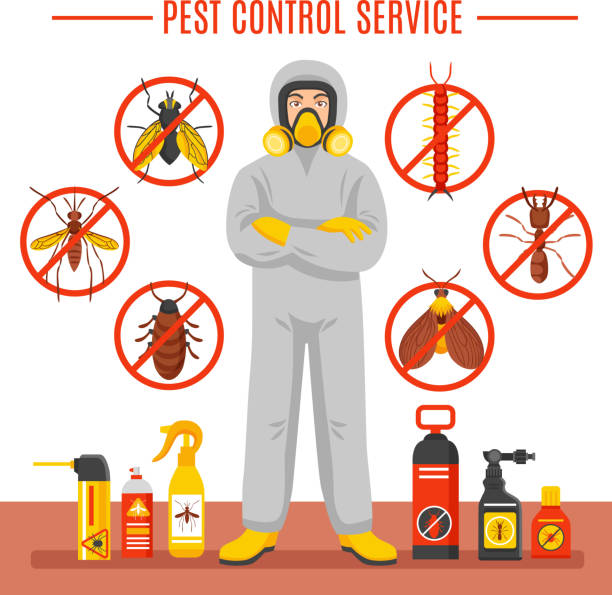Avoid Future Infestations with Services from Pest Control Lockhart
Checking Out Invasion and Treatment Strategies worldwide of Pest Control
The landscape of bug control incorporates a myriad of challenges, specifically as invasions of common household pests remain to evolve. Comprehending the behaviors and reproductive patterns of these problems is important for developing efficient therapy approaches. By incorporating precautionary actions with sophisticated management techniques, such as Integrated Bug Administration (IPM), home owners can better protect their atmospheres. Nonetheless, the effectiveness of these techniques may vary substantially based upon details scenarios. What hidden aspects add to the success or failure of these techniques in different settings?

Usual Home Vermin
When it pertains to handling our home, comprehending usual house insects is vital. These insects not just interrupt our comfort but can likewise pose wellness threats and damages home. One of the most common house parasites consist of ants, cockroaches, rodents, termites, and bed bugs.
Ants, often seen foraging in kitchens, can infect food and establish big swarms. Rats, including mice and rats, can trigger structural damage and carry conditions like hantavirus and salmonella.
Recognizing the signs of these parasites, such as droppings, nests, or bite marks, is essential for early intervention (Pest Control Lockhart). Proper cleanliness methods, securing entry points, and keeping a clutter-free environment are effective preventative actions. By determining these usual household insects and comprehending their behaviors, house owners can take aggressive actions to minimize problems, making certain a healthier living atmosphere
Recognizing Insect Infestations
Insect invasions can escalate rapidly, turning a minor inconvenience into a substantial trouble otherwise attended to without delay. Understanding the nature of these problems is crucial for effective administration. Parasites can invade property and commercial areas for various reasons, including the search for food, sanctuary, or breeding premises. Usual elements contributing to invasions consist of bad sanitation, structural vulnerabilities, and seasonal adjustments that drive pests indoors.
Identifying the type of pest is essential, as different varieties display diverse habits and reproductive prices. Rats might establish nests in hidden locations while pests like cockroaches thrive in wet settings. Early discovery often pivots on identifying indicators such as droppings, gnaw marks, or unusual audios, which can suggest a problem prior to it becomes serious.
Cozy, moist climates can facilitate the fast development of parasite populaces, while modifications in landscape design or building and construction can unintentionally create favorable settings. An informed approach to recognizing these dynamics lays the groundwork for efficient insect monitoring strategies in the future.
Treatment Techniques and Strategies
Efficient treatment methods and methods are crucial for alleviating parasite invasions and bring back a secure environment. A complex technique is frequently best, including chemical, biological, and mechanical techniques customized to the specific insect and the extent of the problem.
Chemical treatments consist of making use of pesticides and herbicides, which can efficiently get rid of insects. Nonetheless, appropriate application and adherence to safety guidelines are critical to reduce risks to humans and non-target organisms. Integrated Parasite Management (IPM) urges the judicious use of chemicals as a last resource, relying instead on monitoring and threshold levels to determine treatment needs.
Biological control approaches entail introducing natural killers or parasites to lower insect populaces. This technique is increasingly popular, particularly in agricultural settings, as it promotes environmental sustainability.
Mechanical techniques, such as catches and obstacles, offer prompt relief from bugs without introducing chemicals. check my blog Alternatives include sticky traps for insects or physical obstacles for rodents.
Eventually, the option of treatment approach other should think about the details bug, the environment, and potential influence on human health and wellness and environments. A well balanced combination of these methods can effectively manage problems while advertising long-term insect control options.
Preventive Measures for Homes
Proactively attending to bug problems before they intensify is crucial for maintaining a healthy home atmosphere (Pest Control Lockhart). Applying efficient preventative actions can significantly reduce the likelihood of infestations, eventually safeguarding both your property and health

Proper landscape design additionally plays an important role in avoidance. Keeping shrubs and trees trimmed away from your house reduces the chances of parasites discovering their method inside your home. Guarantee that drain systems are working successfully to avoid standing water, which can attract in mosquitoes and other pests.
Last but not least, routine assessments are suggested. Consistently looking for indicators of pest task allows check this for early intervention. By adopting these preventive steps, property owners can develop an environment that is less hospitable to parasites, thus enhancing their overall lifestyle and decreasing the demand for extensive bug control interventions.
Business Insect Control Strategies
A comprehensive strategy to industrial insect control is crucial for services intending to keep a secure and sanitary setting. Effective techniques include a mix of normal assessments, staff member training, and the implementation of Integrated Pest Administration (IPM) practices.
Routine examinations make it possible for very early detection of insect task, enabling for prompt treatment. Businesses ought to create a routine timetable for these evaluations, concentrating on high-risk locations such as kitchens, storage rooms, and waste disposal websites. Staff member training is similarly essential; team must be educated on the indicators of bug problems and the value of reporting them instantly.
Executing IPM practices assists reduce insect problems sustainably. This includes environment modification, such as securing entrance factors and decreasing clutter, in addition to utilizing natural deterrents prior to considering chemical therapies.

Moreover, teaming up with a qualified insect control copyright makes sure accessibility to professional knowledge and advanced treatment choices. This partnership can result in customized bug control plans tailored to the certain needs of business, minimizing risks and improving total efficiency. Ultimately, a positive and educated technique cultivates a pest-free environment, guarding both public health and company online reputation.
Final Thought
In conclusion, effective pest control demands a comprehensive understanding of common home insects and their behaviors, paired with targeted therapy approaches. Applying preventive measures along with treatment strategies such as Integrated Pest Administration and organic control enhances the capability to mitigate invasions.